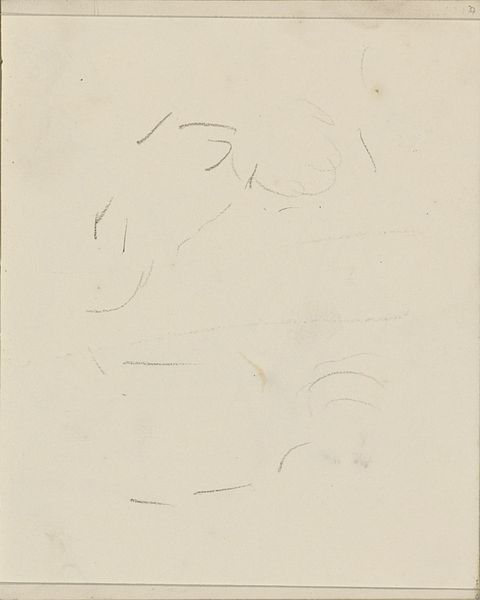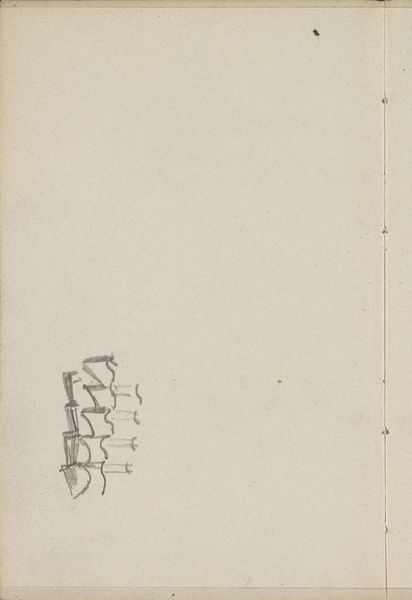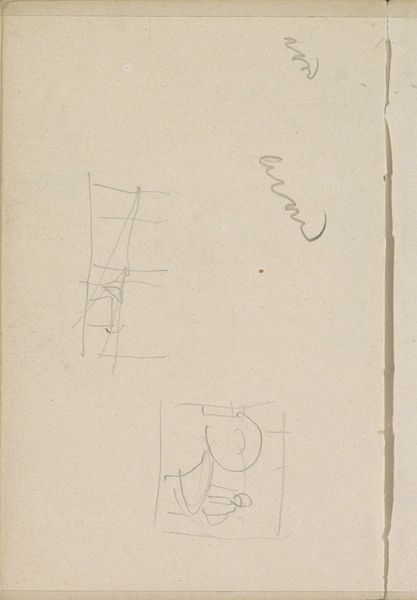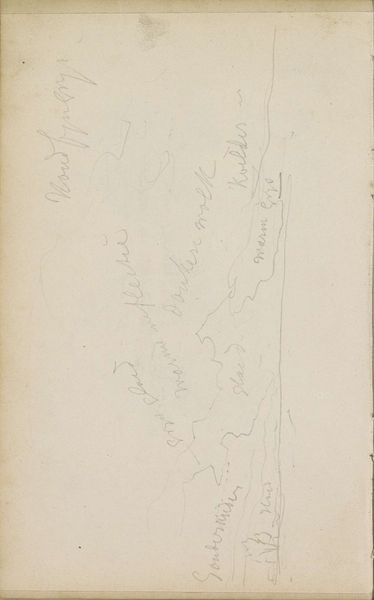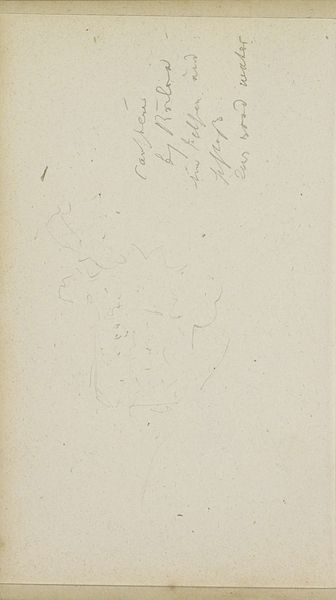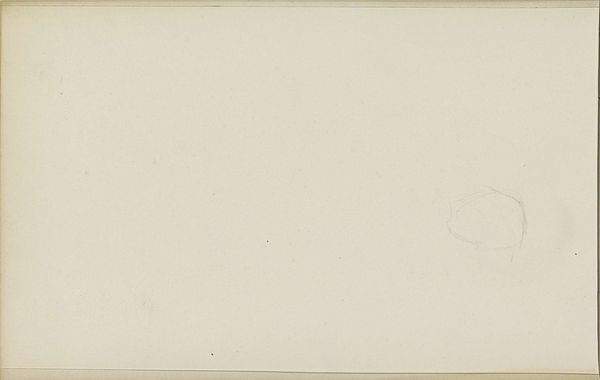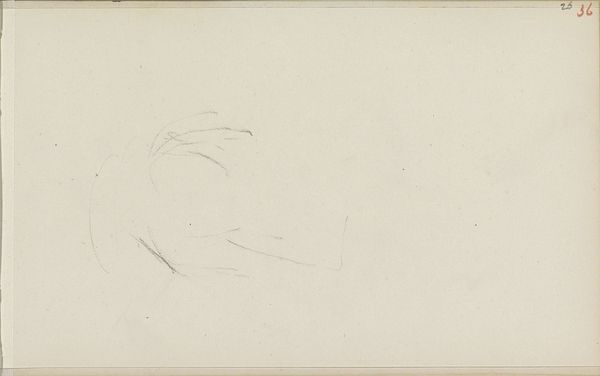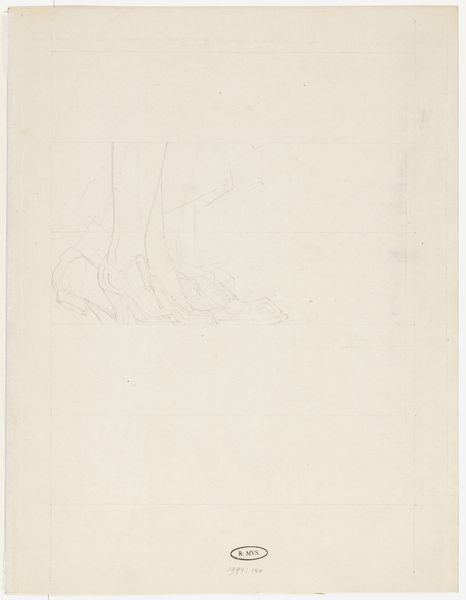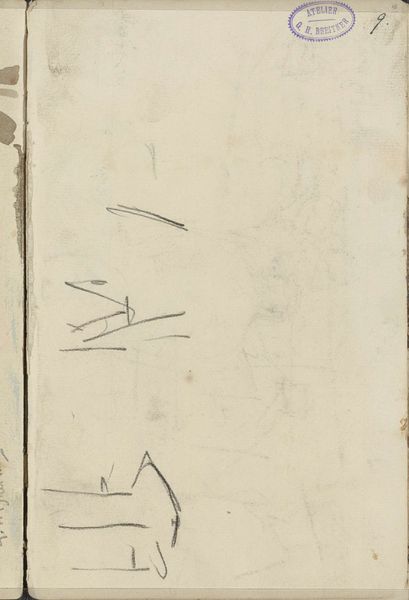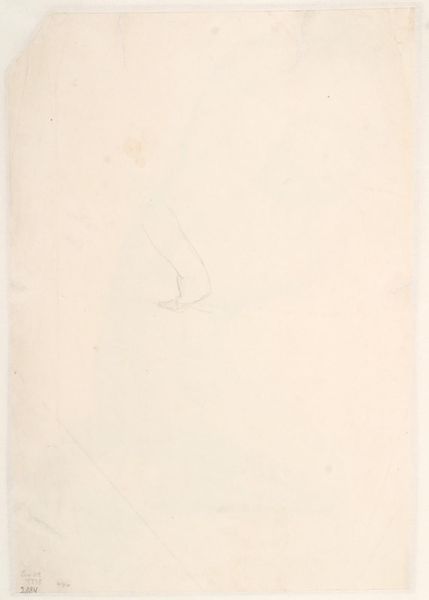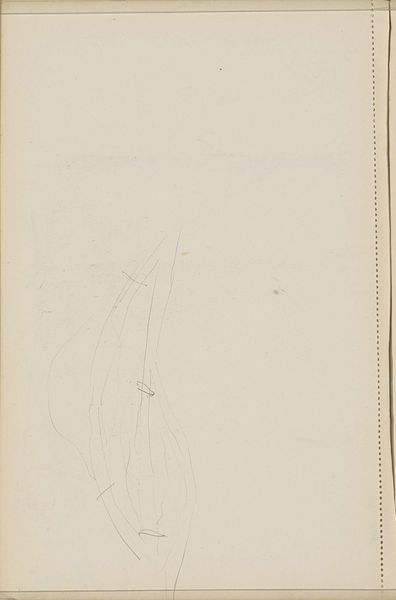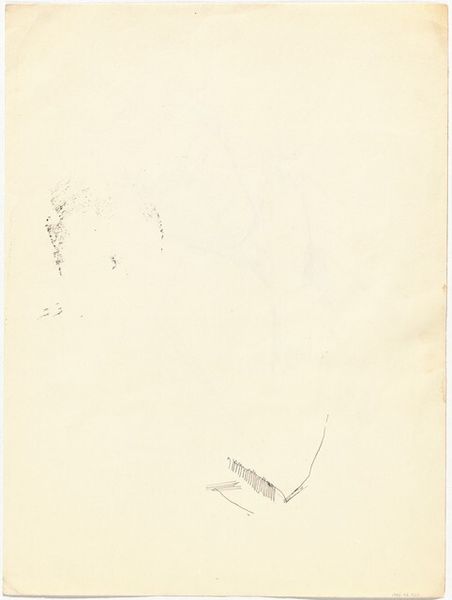
drawing, pencil
#
drawing
#
light pencil work
#
personal sketchbook
#
pencil
#
abstraction
#
line
#
sketchbook drawing
#
modernism
Copyright: Rijks Museum: Open Domain
Editor: So, this is a pencil drawing, called "Studie," by Gerrit Willem Dijsselhof, made sometime between 1876 and 1924. It’s at the Rijksmuseum. It seems like a page torn from a personal sketchbook. What jumps out at you when you look at it? Curator: The intimacy of the sketch immediately strikes me. Look at the paper itself—its texture, its probable source. Was this high-quality paper, reflecting an elevated status of artmaking, or something more utilitarian, suggesting the artist’s more direct engagement with material constraints? Editor: I hadn't thought about the paper that way. I guess I assumed it was just... paper. Curator: Exactly! What was the role of the "sketch" at this time? Was it a commodity to be sold or merely a record of transient ideas and artistic experimentations? Consider the labor involved in its production, from the pencil manufacture to the artist's hand movements. How do these factor into our appreciation? Editor: So, the materials and the making of it are just as important as the final image? It challenges what we see as valuable in art. Curator: Precisely. Does its minimalist aesthetic reflect an honest approach to materials, an almost craftsman-like intention or is it purely an aesthetic choice? Editor: This makes me think about the Industrial Revolution and mass production, whether he consciously chose a basic process to maybe critique the overproduction of other artwork. Curator: An astute observation! Considering art within its social context is crucial. And notice how even the date range implies fluidity. Was the concept completed or was it continually evolving with changes in technique? Editor: I never really thought about a sketch in terms of its materials and how it reflects on larger industrial forces at work! Thanks, that was very enlightening. Curator: And I never really thought of the artist in terms of labor. I have a new appreciation for artmaking.
Comments
No comments
Be the first to comment and join the conversation on the ultimate creative platform.
